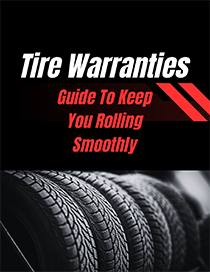What to Expect During a Basic Tire Inspection at the Auto Shop
As drivers, we often hear about essential auto services that ensure our vehicle’s safety and performance, but we might not fully understand what these services involve. If you’re curious about what a basic tire inspection entails and why it matters, this post is for you!
Basic Tire Inspection
When you take your car to an auto shop for a routine tire inspection, the technician will carry out a series of evaluations to ensure your tires are in good condition and safe for the road. Here are the key checks typically included in a basic tire inspection:
Tire Pressure
The technician will measure the pressure in each tire. Proper inflation is crucial for optimal road contact, fuel efficiency, and tire longevity. Using a pressure gauge, they’ll compare the PSI (pounds per square inch) of each tire against the manufacturer’s recommended levels. You can find these recommendations in your vehicle’s owner’s manual or on a sticker inside the driver’s side door.
Why it’s necessary: Maintaining the correct tire pressure is vital. Under-inflated tires can lead to poor handling and increased fuel consumption, while overinflated tires may reduce traction and create a bumpy ride. Always aim to keep your tires at the recommended levels.
Tread Depth Measurement
The technician will use a tread depth gauge to measure how much tread is left on each tire. Adequate tread depth is essential for grip, particularly in wet or icy conditions. The legal minimum is typically 2/32 of an inch, but experts suggest replacing tires when tread depth falls below 4/32 of an inch for safety reasons.
Why it’s necessary: Worn tires with insufficient tread can lead to decreased traction, longer stopping distances, and an increased risk of hydroplaning. Good tread depth is also important for optimal fuel efficiency. Uneven tread wear may indicate alignment issues, which can shorten tire life.
Visual Inspection for Damage
Next, the technician will visually check the tires for visible damage such as cuts, punctures, cracks, or bulges. These issues can pose significant hazards, like blowouts or slow leaks, and may necessitate immediate repair or replacement. Valve stems and caps will also be examined for cracks or leaks.
Why it’s necessary: Even minor damage can lead to serious tire failure, endangering both the driver and others on the road. A damaged valve stem can cause a slow leak, leading to a gradual loss of tire pressure, which is both dangerous and can affect fuel efficiency.
Alignment and Balance Check
While not always part of a basic inspection, many shops will check alignment and balance if uneven wear is detected. Misaligned or unbalanced tires can cause the vehicle to pull to one side, lead to uneven tire wear, and result in a less comfortable ride.
Why it’s necessary: Proper alignment and balance promote smooth driving, reduce tire wear, and enhance fuel efficiency.
Tire Rotation
If your tires show signs of uneven wear, the technician might recommend a tire rotation. Rotating your tires regularly (every 5,000 to 8,000 miles) helps ensure even wear, extends tire life, and improves overall vehicle performance.
Why it’s necessary: Regular tire rotation maximizes your tires’ lifespan, ultimately saving you money over time.
When to Schedule a Tire Inspection
Basic tire inspections are generally recommended every 6,000 to 8,000 miles or approximately every six months, depending on your driving habits and vehicle type. Many drivers choose to have their tires inspected during routine oil changes. Additionally, consider scheduling a tire inspection if:
- You’re preparing for a long road trip and want to ensure optimal tire condition.
- You notice issues like unusual vibrations, pulling, or uneven wear patterns.
- There’s a noticeable drop in tire pressure, or your TPMS light activates.
A basic tire inspection is a straightforward service that helps ensure your tires are safe, efficient, and ready for the road. By keeping your tires in good condition, you’ll enjoy better performance, improved fuel efficiency, and greater peace of mind while driving.







